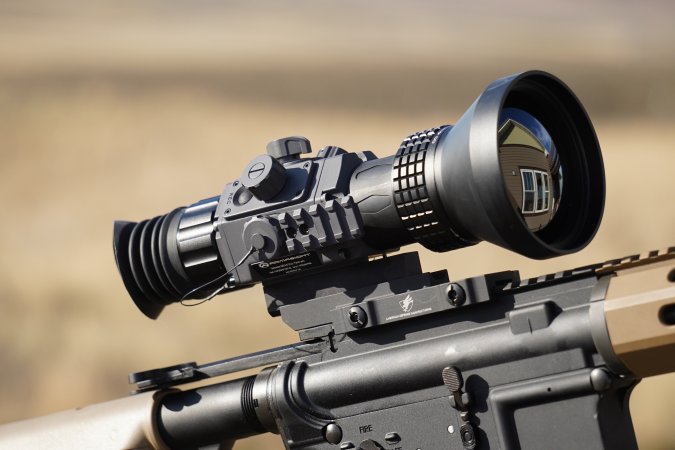Thermal vision rifle scopes were designed to give hunters and tactical professionals an extremely pronounced advantage in either low-light or obstructed environments.
Finding the appropriate scope involves an understanding of which features will best fulfill accuracy and performance in adverse conditions.
Below, we’ll cover the key features to consider when investing in thermal scopes.
Resolution and Image Clarity
The resolution directly influences the clarity of the thermal image. While higher resolutions such as 640×480 pixels and upwards create sharp visuals that can enable users to identify finer details even at long ranges, lower resolutions such as 384×288 pixels still provide good reliability in imaging but might lose clarity with greater distance.
Studies have reported that scopes with 640×480 resolution can greatly increase the detection of targets, especially in complex terrains. Even beginner-level thermal scopes can offer a clear image of heat signatures from 1,000 yards away. High-resolution models have been known to vividly sense heat targets up to 4,000 yards.
Refresh Rate for Moving Targets
Refresh rate impacts the smoothness of the image, especially when following a target in motion. Most thermal scopes fall between 30 Hz and 60 Hz. With a 60 Hz refresh rate, visuals are smoother and have less lag in view, allowing for no interruptions tracking moving targets.
For hunting applications, 50 Hz or higher refresh rates will prevent breakup into the viewing area — especially when targets are moving rapidly in thick cover.
Detection Range and Field of View
Detection range refers to the maximum distance a scope can effectively perceive heat signals. For most hunting and tactical applications, scopes with detection ranges between 500 and 1,500 yards are effective. However, some extended detection models like the AGM Rattler V2 Series, are valuable and allow for more than 1,000 yards to identify heat sources.
Field of view is equally crucial for scanning larger areas. Wider FOVs are therefore useful in close ranges or in forested areas. Meanwhile, narrower FOVs increase focus and precision in open country.
Color Palettes and Imaging Modes
In thermal scopes, many colors are provided, each serving its own purpose:
- White-Hot: Shows warm objects as white, this color scheme is popular for general purposes.
- Black-Hot: Warmer objects appear dark, enhancing contrast in complex scenes.
- Rainbow: Used to distinguish temperature magnitudes and variations in the same view.
Selecting the appropriate palette improves image interpretation, helping hunters identify their targets quickly. Many advanced thermal scopes now offer mode-switching, allowing users to adjust color schemes to adapt to specific conditions.
Battery Life and Durability
Most thermal scopes use lithium-ion batteries that have a practical, working life between 4 and 8 hours, depending on their usage rate. Longer battery life is important to offer reliability for longer hunts and nighttime surveillance. The AGM Rattler V2 Series, for instance, includes an energy-efficient design. That promises longevity without a lag in performance.
Durable scopes are waterproof and shock-resistant. That durable construction is needed for field use that might include rain or sudden impacts. Look for a device that meets or exceeds IP67 standards so you can be certain of protection from water and dust.
Budget
Thermal scopes can be purchased at different prices, starting at around $1,000 for entry-level models to more than $5,000 for high-end options.
Mid-range scopes, between $2,000 and $3,000, have a good resolution, sometimes a greater detection range, and they also might be more durable than cheaper models. High-end thermal scopes assure even better clarity and longer detection-capable models for professional or long-range uses.
General and recreational thermal scope needs are usually met with a middle range unit that doesn’t make too large a dent in your pocketbook.
Which Thermal Vision Rifle Scope is Right for You?
Choosing a thermal vision rifle scope with the right set of features is a must for effective hunting and tactical use. A high resolution, an optimal refresh rate, and adaptive imaging modes all provide the key to an exact and reliable experience.






